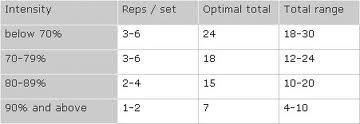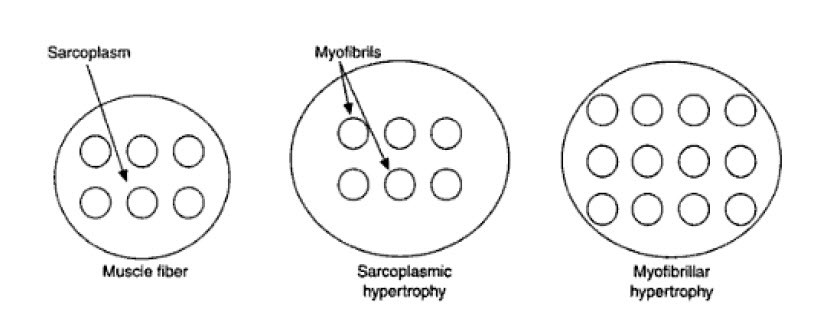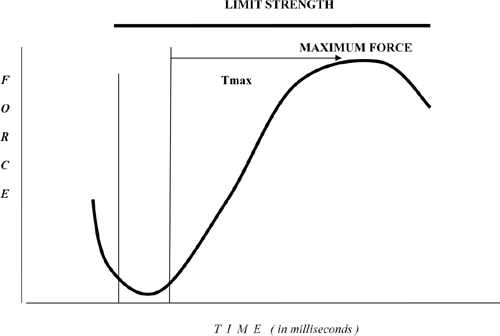The Modern Conjugate Training Method
By
Tom McCullough MEd.
There are many way to train athletes. One of the most popular methods is periodization. With the periodized method athletes are tested in their core lifts and their training from there on out is based of their tested 1 rep max or 1RM.
One thing I have noticed being a competitive strength athlete for many years as well as strength coach is while this method works, athletes are always taking two steps beck to go one step forward. In other words we slowly peak athletes strength and then take rest periods and spend quite a long time lifting at much lighter weights. Strength gains are very slow and peak strength is diminished when our athletes are no longer lifting heavy. So there must be a better way to get kids strong and keep them that way year round.
For quite a few years of my competitive career, I lucky enough to have trained with some of the world’s greatest strength athletes including Jim Cash, Anthony Clark, Tiny Meeker and John Inzer. Many of these great strength athletes trained at max weight all year round. They were always at a peak, yet remained healthy with no injuries. So I started opening my mind to new ideas and gave this style of lifting a try with my own training. Much to my surprise, this method works well, my strength is constantly high and I continue to grow.
So what is secret?
The conjugate method (sequence system) was developed by Dr. Yuri Verkhoshansky in the 1960’s and brought to the United States from the Soviet Union after the fall of the Iron Curtin in the late 80’s. The conjugate method was then modified and later on made popular here in the USA by powerlifter and strength coach Louie Simmons from Westside Barbell. The Westside conjugate system is the best of two advanced training systems: the Soviet system, where several special exercises are used to advance the training of superior lifters and athletes, and the Bulgarian system, where near-max lifts are performed every workout.[4] In this article we will be talking specifically about the WSB for of conjugate training.
In this form of conjugate training, a careful attention is paid to constantly changing volume and intensity in the weekly training program which I have personally found to be a very important aspect in weight training. As we changing volume and intensity and even exercise, we also prevent homeostasis from occurring which forces the body to constantly adapt to new forms of mechanical stress. This type of training has been very popular with pro bodybuilders too as they constantly change reps, sets and exercises they use to cause muscle hypertrophy. Powerlifters especially, have also been using conjugate training to keep their total going up and muscle mass constantly increasing.
In this method of training, A.S. Preliphin’s research investigating optimal training loads is used to determine the intensity and number of lifts per workout. See the table is below:
Preliphin’s Table

Types of Hypertrophy
The muscle cell can grow and get larger through two methods; 1) sarcoplasmic hypertrophy and 2) myofibrillar hypertrophy. [1] [2]

Sarcoplasmic hypertrophy is an increase in the volume of the non-contractile muscle cell fluid, sarcoplasm. This fluid accounts for 25-30% of the muscle’s size. Although the cross sectional area of the muscle increases, the density of muscle fibers per unit area decreases, and there is little increase in muscular strength [1]. This type of hypertrophy is mainly a result of high rep [8-12], “bodybuilder-type” training [2].
Myofibrillar hypertrophy, on the other hand, is an enlargement of the muscle fiber as it gains more myofibrils, which contract and generate tension in the muscle. With this type of hypertrophy, the area density of myofibrils increases and there is a significantly greater ability to exert muscular strength [1]. This type of hypertrophy is best accomplished by training with heavy weights for low reps of 1-3. [2]
Now which type is best for athletes? The average football play last around 4.1 seconds, a baseball bat swing takes about a second, a punch, or jump takes less than a second. The average 1RM weight lift takes about 3 seconds to complete. So as you can see training maximal lifts in the range of 1-3 reps makes a whole lot of sense for most all athletes.
Low rep heavy weight training also increases neural drive to the muscle, increases synchronization of motor units, increases activation of the contractile apparatus, and decreases inhibition by the protective mechanisms of the muscle (golgi tendon organ) [1]. Low rep, heavy weight training also hypertrophy the pure fast twitch fibers – the high-threshold, Type IIB fibers. Incorporating low rep, heavy weights into your routine at the right time will definitely improve your muscles ability to generate more force and contract maximally during any sporting activity.[3] In essence, myofibrillar hypertrophy is what this writer would call functional hypertrophy for most sport..
With conjugate training, not only is myofibrillar hypertrophy address but sarcoplasmic hypertrophy is also trained. Researcher Vladimir Zatsiorsky in 1995 found that there are three methods which are very important in inducing maximal muscle tension, thus stimulating optimal growth and strength [3].
1. Overcoming maximal resistance that causes maximal or near maximal tension. (Max effort
2. Using considerably less maximal resistance until fatigue causes one to fail. (Repetitive effort)
3. Using sub-maximal weights accompanied by speed. (Dynamic effort)
To get maximal or near maximal tension athletes will need to lift maximal or near maximal weight on our core lifts. This type of lifting as we saw above causes myofibrillar hypertrophy which give the athlete strength and muscle density. We have found in our off-season program that without spending a day running in our off-season from November to August, our kids are getting faster at their timed 40 speed each time we test. Why? Because their legs stronger using max effort days and training the muscle fibers in the legs to be more explosive. Plus, the added benefit of maximal or near maximal tension is that it also strengthens tendons and ligaments causing them to be thicker and stronger which in turn helps prevent injury.
Conjugate training also utilizes a more bodybuilding type of training where reps are in the 8-12 range but taken to failure. Training in this fashion cause sarcoplasmic hypertrophy. This is also important because it give the athlete more muscle mass which helps protect them from injury.
Finally, conjugate training incorporates ample time by doing what is called dynamic or speed training where explosive strength is trained. By spending time training at weights from 50% 1RM to 75% of 1RM enough speed can be generated while lifting weight thus, developing maximal force that will carry over to faster speed, higher jumps, harder throws and even heavier weight being used in strength training.
Remember this formula from physics class?
Force = mass x acceleration

This formula simply means that the less time it takes to move a given weight the more force is generated by the muscles doing it. So the more force a football player is able to generate firing out of a three point stance the faster the lineman comes off the ball and the harder they will hit. The more speed generated at the initiation of the swing of a baseball bat, the more force will be generated when the bat meets the ball. So it is very important that most athletes are explosive, unless you run cross country. Also remember high threshold fast-twitch motor units are responsible for success in speed, power, and strength sports due to the tremendous forces they are capable of generating.
So researchers have determines that when training at weight from 50% to about 75% maximal force can be generated by recruiting as many fast twitch muscle fibers and motor units as possible. [3] As the weight goes up from 75%, the amount of time increases thus optimal force is no longer generated as you can see in the chart below. So after about 75% of 1RM we start at that point to work more on limit strength and not optimal force development. But as you can imagine, great abilities to generate maximal force leads to greater limit strength, which also leads to greater myofibrillar hypertrophy.
So when using the conjugate method in training athletes and combining max effort, dynamic effort and repetitive effort days you are in essence training the most important elements of strength:
1. Starting Strength
2. Explosive strength
3. Speed strength
4. Limit strength
Max Effort Day
On max effort day the idea is to stimulate myofibrillar hypertrophy. This is done by lifting weights in excess of 90% of 1RM. Have your athletes try to break records every time they go into the gym. If they are sore from workouts or after a competition they only lift as heavy possible for that situation. The conjugate method is very similar to the old Bulgarian Olympic lifting system where no matter how you feel you still push yourself to your capabilities of that particular day.
Now many worry that by spending too much time at such heavy weight the CNS system will quickly become fatigued and the athlete will become over trained. However, Louie Simmons found that by switching exercises every two weeks this can be avoided and maximal strength kept to a peak all year round. [4] Remember conventional lifts like squats, bench press, power cleans or deadlifts don’t necessarily have to be done on max effort days. Instead you can lift heavy tires, use heavy medicine balls, or any other object that creates maximal loading on the muscles. Have you athletes work up to a heavy 1-3 reps for 1 set and make sure there are at minimum of 72 hours between max effort days using the same body part. Rest periods are generally longer (3-5 min) since the loads are maximal and time is needed to recover. This method builds limit strength and helps to develop explosive strength.
Dynamic Effort Day
On dynamic effort day we generally use the squat and bench press as the main lifts, however power cleans or deadlifts can also be used. Use weights that are in the 50% to 75% of 1RM range and use Preliphins table (above) to determine the proper volume. Squats (lower body) are best done at 2 repetitions using 9-15 sets at 50 – 70% and 6-8 sets at 70-75%. For the bench press keep the reps to 3’s and use the same volume as with squats. Intensity will be kept constant each week at 50% of 1RM.
If you decide to include power cleans of deadlifts use only 1 rep and the same sets as the other previous lifts. Rest periods should be kept down to about 1 minute. This method builds explosive strength and speed strength. The dynamic effort day or speed day should optimally be done 72 hours after the max effort day.
In this type of training, it is very important that the athletes learn to be very explosive when moving the weight. It is important they generate as much speed as possible when moving the weight in order to generate as much force as possible. Plyometric or jump training can also be added to this day. You can also add rubber bands or chains to the core lifts.
Repetitive Effort Day
Repetitive effort day is usually part of max effort day. After max lifts are done the muscle groups used to perform that lift worked to increase sarcoplasmic hypertrophy. This type of training is not only done using multi-joint exercises but can also be done using isolation exercises. Remember counting reps is not as important as going to failure. So use 3-4 sets and use a weight that is heavy enough to cause muscle failure around 8-12 reps. Rest periods of 2 minutes are good.
Putting The Program Together
Since most strength coaches only work with athletes from Monday to Friday, I suggest that you design a conjugate program where max effort days are generally done on Tuesday and Wednesday. Dynamic effort days are done on Monday and Thursday. Here is what it will look like:
Monday – Dynamic Effort/repeated effort upper body
Tuesday – Max Effort/repeated effort lower body
Wednesday – Max Effort/repeated effort upper body
Thursday – Dynamic effort/repeated effort lower body
So a weeks programs will look something like this: